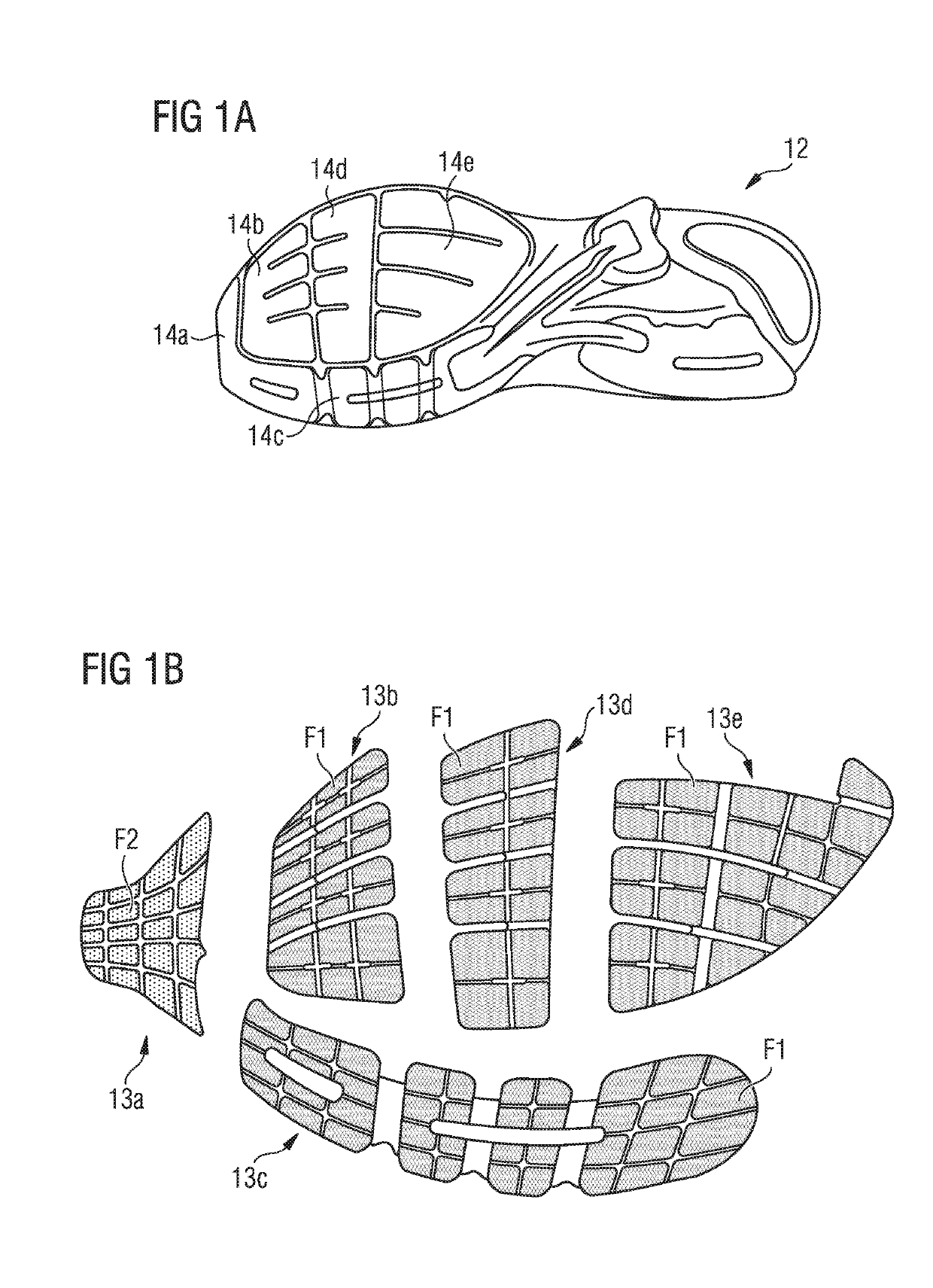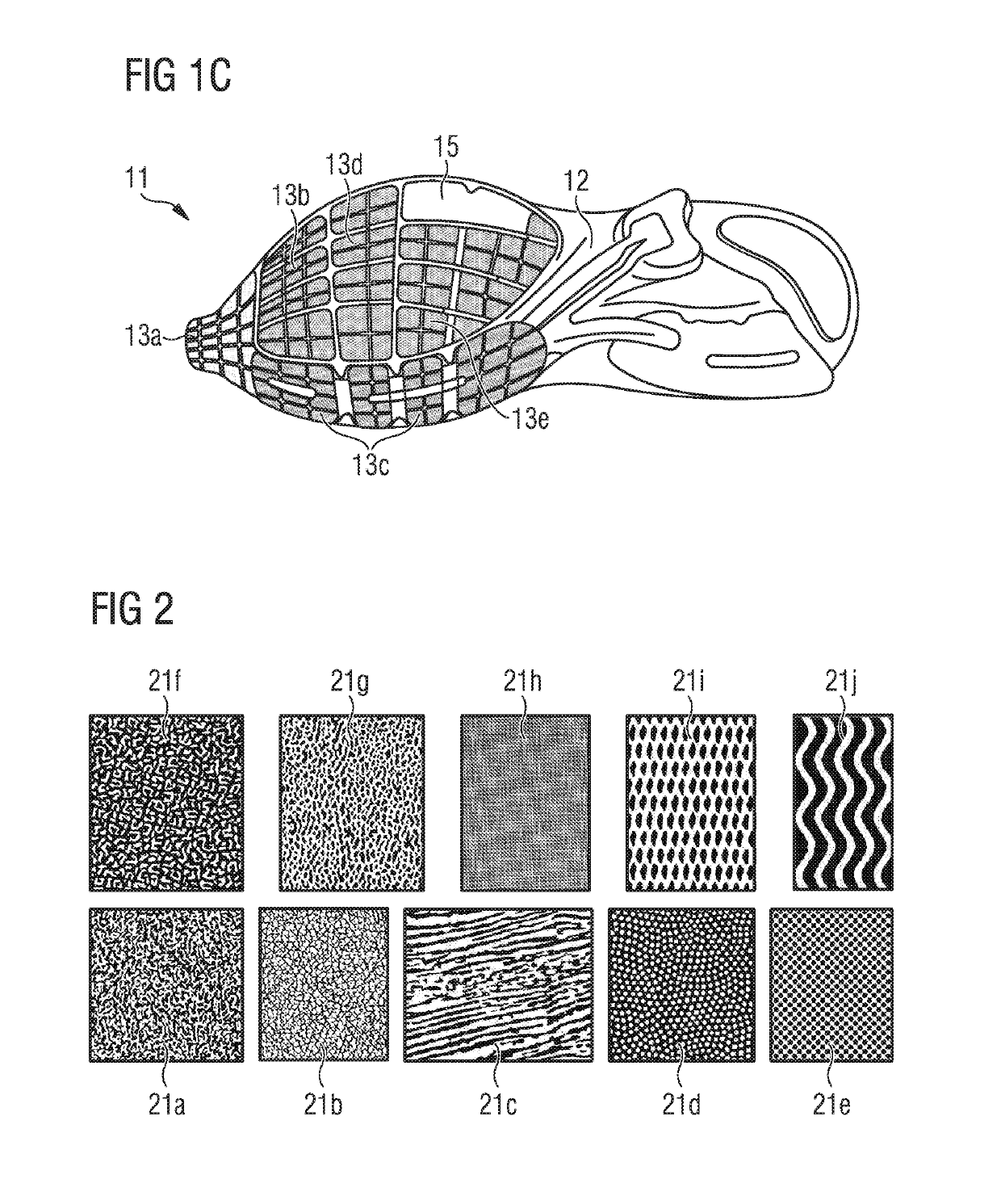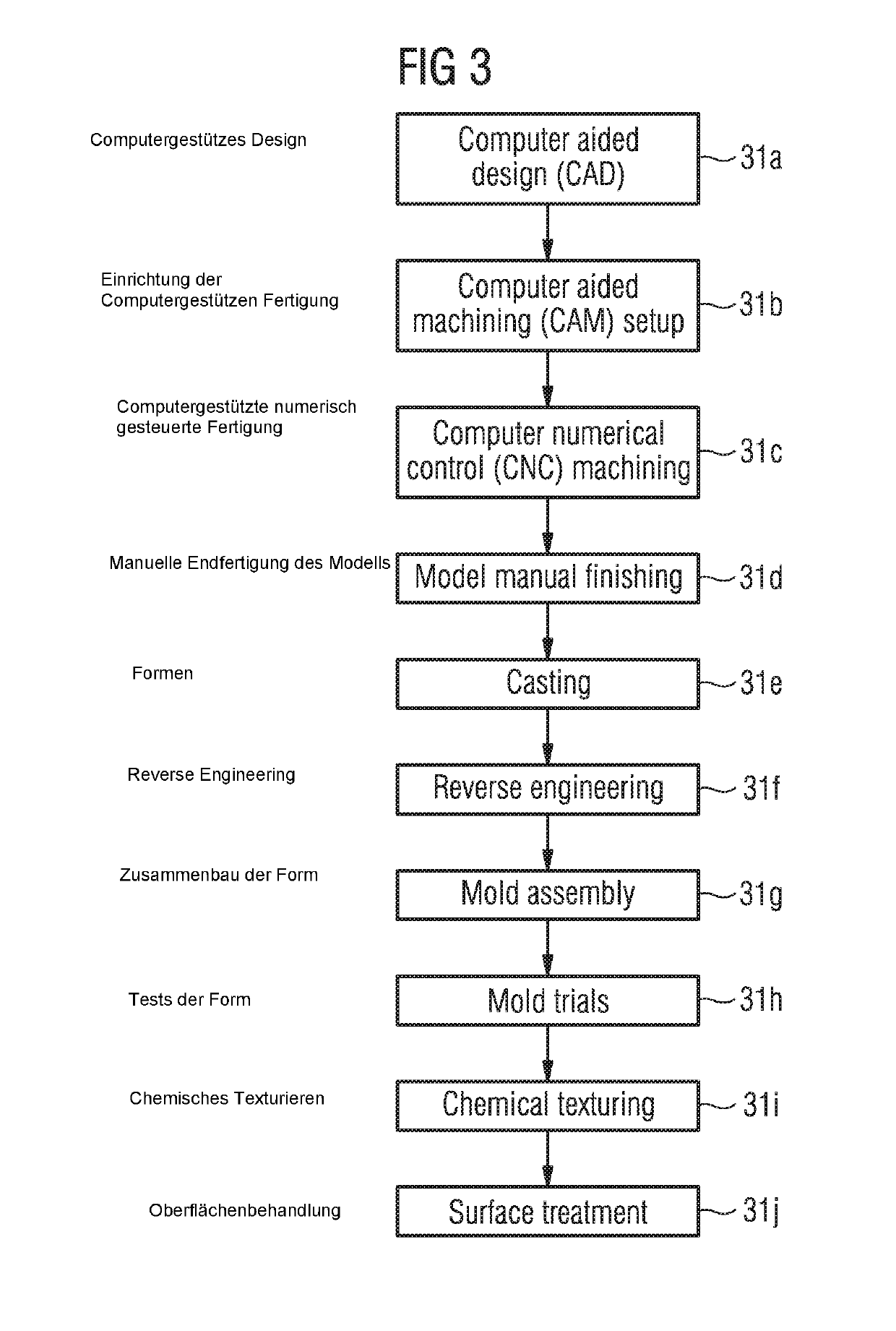3-d printed master model
a 3d printing and master model technology, applied in the field of master models, can solve the problems of the most susceptible to wear and tear, the texture requires mechanical finesse, etc., and achieve the effects of improving the amount of grip, improving the resolution of texture, and improving the grip
- Summary
- Abstract
- Description
- Claims
- Application Information
AI Technical Summary
Benefits of technology
Problems solved by technology
Method used
Image
Examples
Embodiment Construction
[0086]In the following some embodiments of the invention are described in detail. It is to be understood that these embodiments can be modified in a number of ways and combined with each other whenever compatible and that certain features may be omitted in so far as they appear dispensable. While the invention is described primarily with reference to producing a mold for a sole element for an article of footwear, it is to be understood that the master model may be a positive or negative model which can be used to produce any mold and any molded component that requires a textured surface. For example, the master model may alternatively be used for the production of a mold for forming textured handles for bicycle handlebars, handles for sports rackets, golf clubs, balls, gloves, etc.
[0087]FIG. 1A shows an exemplary first part 12 according to the invention. FIG. 1B shows exemplary second parts 13a-13e configured to fit in the corresponding recesses 14a-14e, respectively, formed in the ...
PUM
| Property | Measurement | Unit |
|---|---|---|
| Size | aaaaa | aaaaa |
| Electrical resistance | aaaaa | aaaaa |
Abstract
Description
Claims
Application Information
 Login to View More
Login to View More - R&D
- Intellectual Property
- Life Sciences
- Materials
- Tech Scout
- Unparalleled Data Quality
- Higher Quality Content
- 60% Fewer Hallucinations
Browse by: Latest US Patents, China's latest patents, Technical Efficacy Thesaurus, Application Domain, Technology Topic, Popular Technical Reports.
© 2025 PatSnap. All rights reserved.Legal|Privacy policy|Modern Slavery Act Transparency Statement|Sitemap|About US| Contact US: help@patsnap.com



